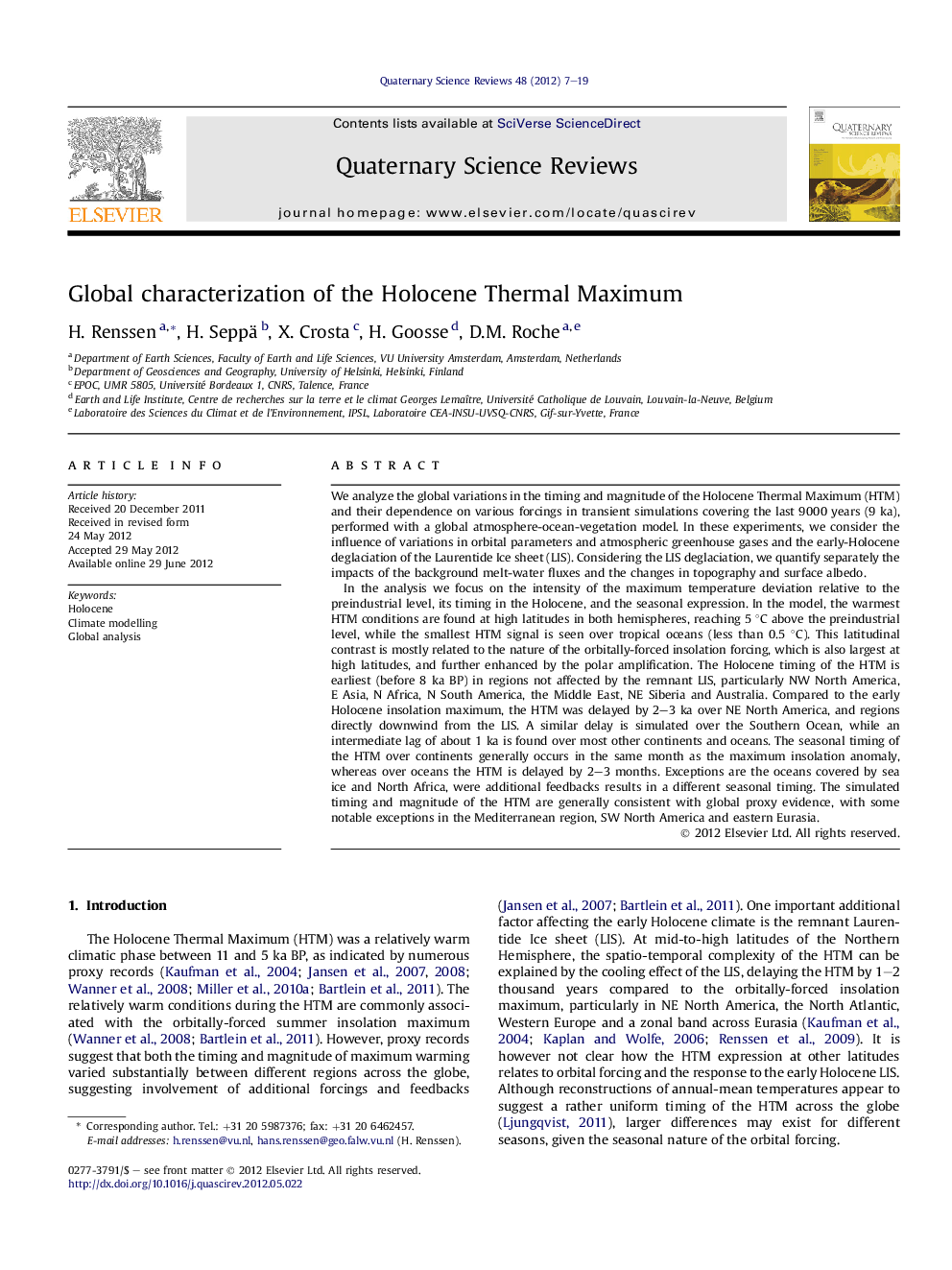| کد مقاله | کد نشریه | سال انتشار | مقاله انگلیسی | نسخه تمام متن |
|---|---|---|---|---|
| 4736399 | 1640886 | 2012 | 13 صفحه PDF | دانلود رایگان |

We analyze the global variations in the timing and magnitude of the Holocene Thermal Maximum (HTM) and their dependence on various forcings in transient simulations covering the last 9000 years (9 ka), performed with a global atmosphere-ocean-vegetation model. In these experiments, we consider the influence of variations in orbital parameters and atmospheric greenhouse gases and the early-Holocene deglaciation of the Laurentide Ice sheet (LIS). Considering the LIS deglaciation, we quantify separately the impacts of the background melt-water fluxes and the changes in topography and surface albedo.In the analysis we focus on the intensity of the maximum temperature deviation relative to the preindustrial level, its timing in the Holocene, and the seasonal expression. In the model, the warmest HTM conditions are found at high latitudes in both hemispheres, reaching 5 °C above the preindustrial level, while the smallest HTM signal is seen over tropical oceans (less than 0.5 °C). This latitudinal contrast is mostly related to the nature of the orbitally-forced insolation forcing, which is also largest at high latitudes, and further enhanced by the polar amplification. The Holocene timing of the HTM is earliest (before 8 ka BP) in regions not affected by the remnant LIS, particularly NW North America, E Asia, N Africa, N South America, the Middle East, NE Siberia and Australia. Compared to the early Holocene insolation maximum, the HTM was delayed by 2–3 ka over NE North America, and regions directly downwind from the LIS. A similar delay is simulated over the Southern Ocean, while an intermediate lag of about 1 ka is found over most other continents and oceans. The seasonal timing of the HTM over continents generally occurs in the same month as the maximum insolation anomaly, whereas over oceans the HTM is delayed by 2–3 months. Exceptions are the oceans covered by sea ice and North Africa, were additional feedbacks results in a different seasonal timing. The simulated timing and magnitude of the HTM are generally consistent with global proxy evidence, with some notable exceptions in the Mediterranean region, SW North America and eastern Eurasia.
► We provide a global characterization of the Holocene Thermal Maximum.
► We analyze the spatial variations in timing, intensity and seasonal expression.
► The model results are in general agreement with global proxy evidence.
Journal: Quaternary Science Reviews - Volume 48, 10 August 2012, Pages 7–19